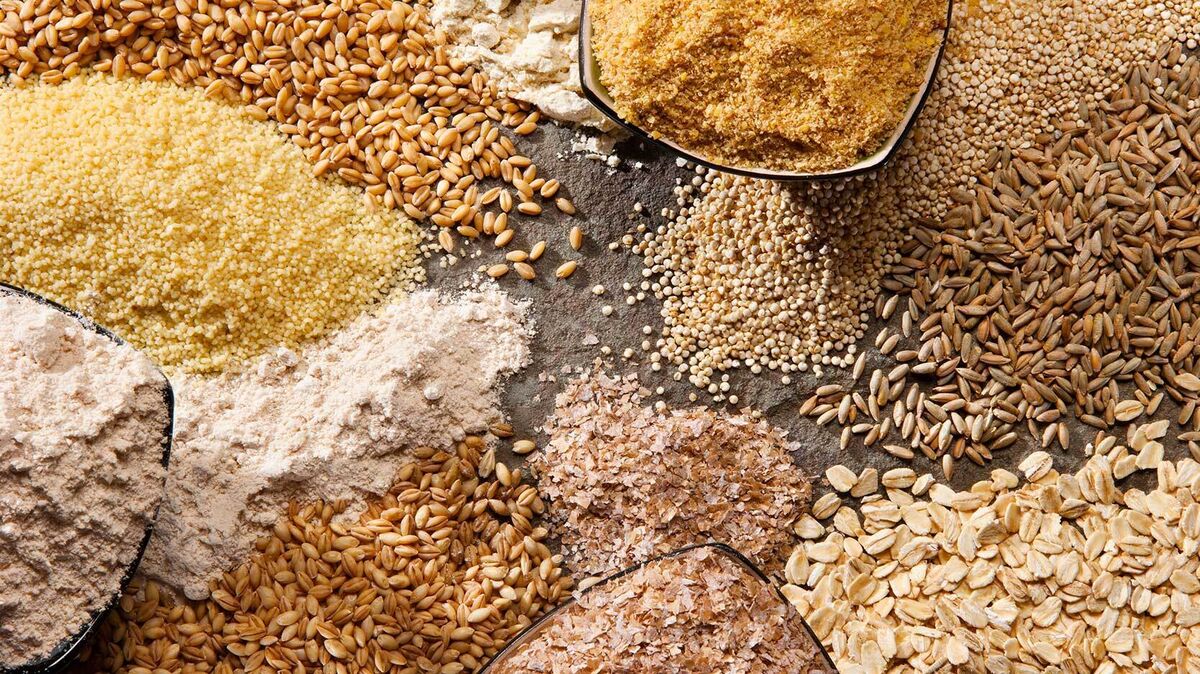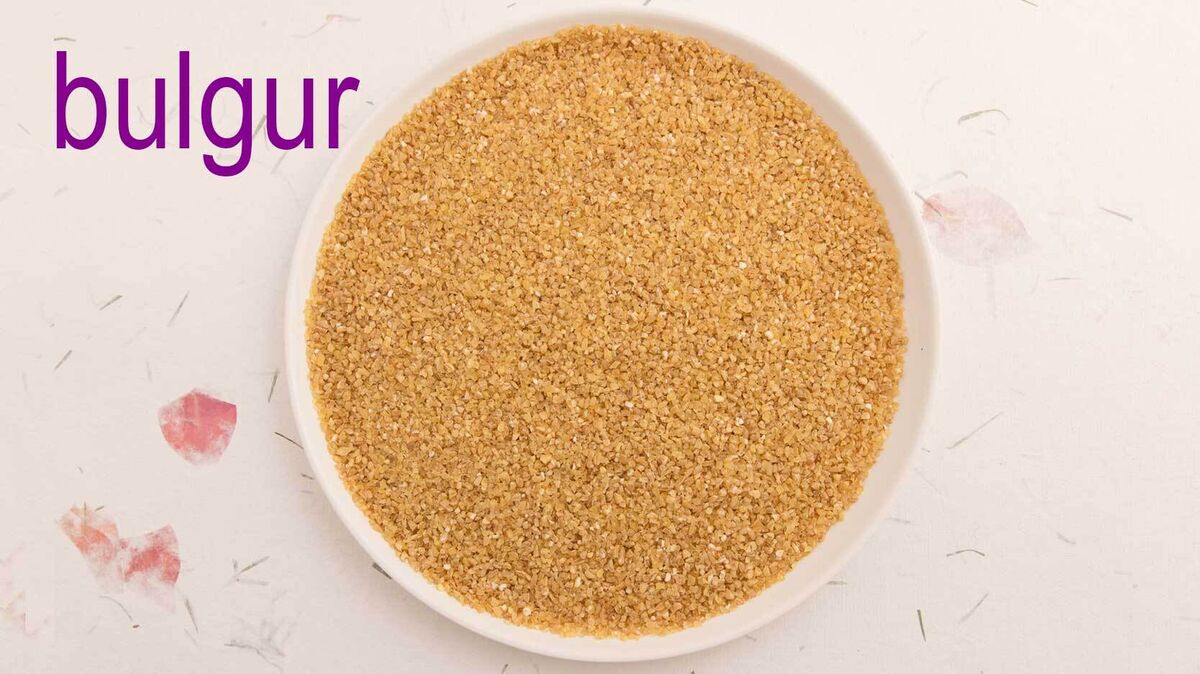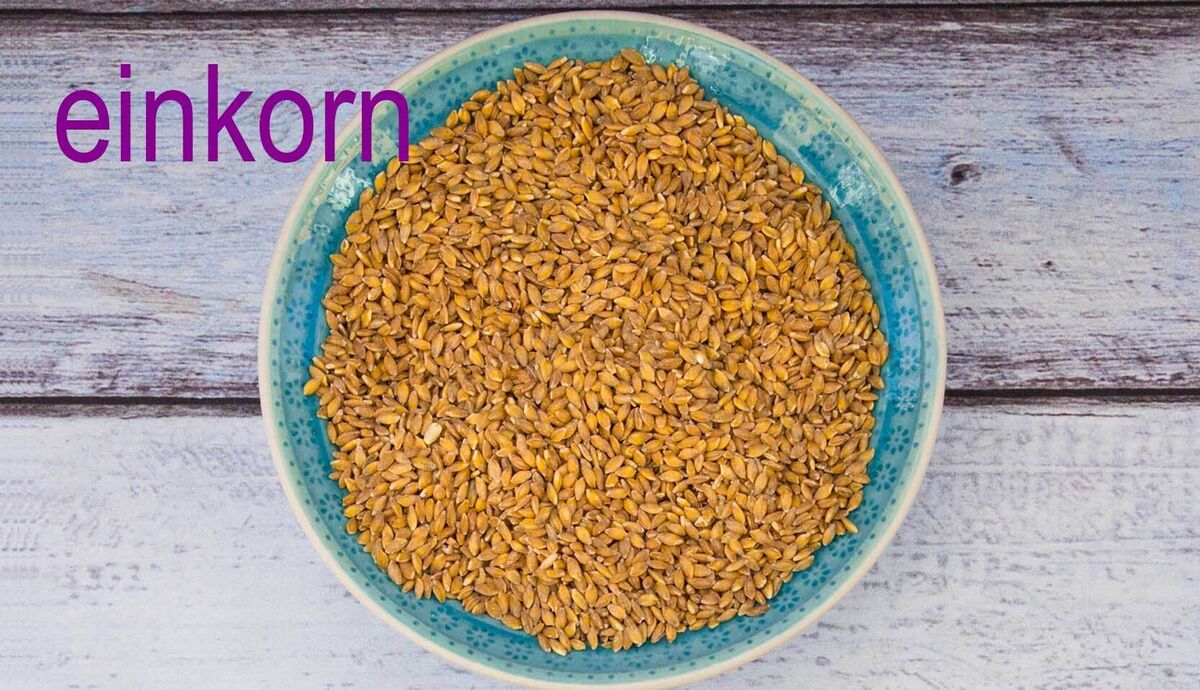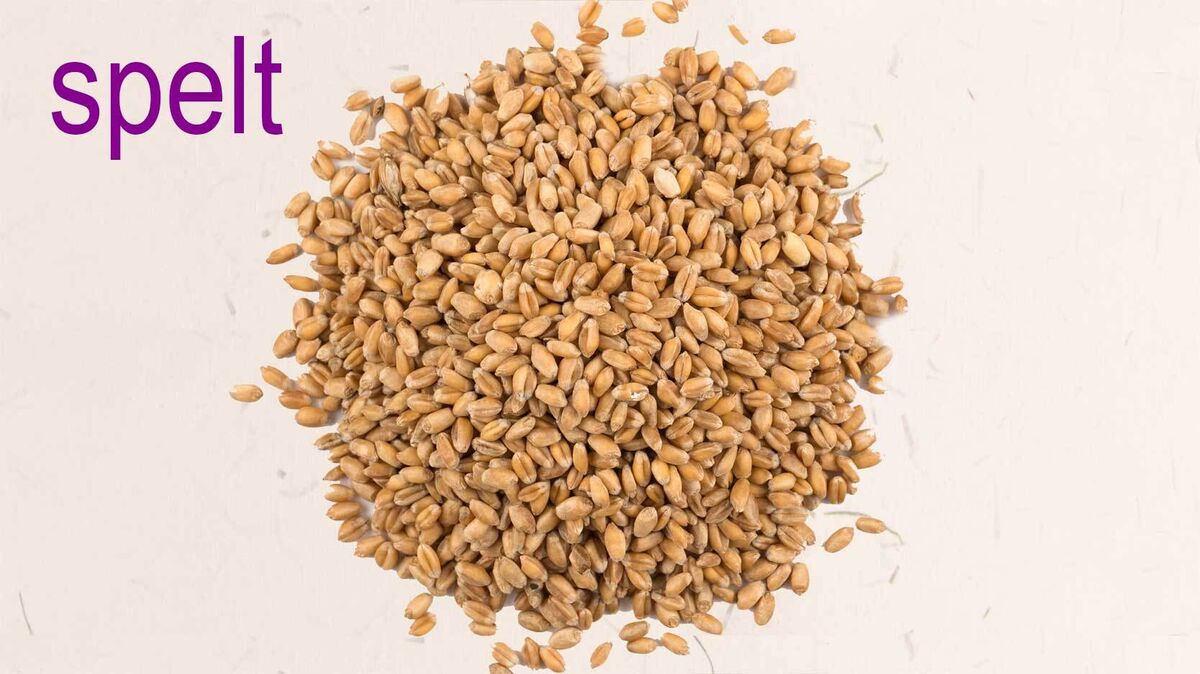
Plants that produce grain are classified as grasses. The fruit of these plants are dry, edible berries that are often referred to as kernels or grains. These fruits can be refined or used in their whole form. A whole grain is the entire kernel of grain. Discover several examples of grains often used in whole grain form.
Common Examples of Whole Grains
Any unrefined grain is considered to be a whole grain. When whole grains are processed, the bran, germ and endosperm are not removed. The fact that these things are not removed is what makes them whole grain.
Barley (Hordeum spp.)
Whole grain barley includes hull-less or naked barley, but pearled barley is not whole grain. It is often used as flour, flakes or grits.
Bulgur (Triticum ssp.)
Also referred to as cracked wheat, bulgur is whole wheat that has been pre-cooked. The entire wheat grain is cooked then chopped after drying, so nothing is removed from it. Bulgur is a common ingredient in tabbouleh and other Middle Eastern recipes.

Canary seed (Phalaris canariensis)
This whole grain was recently approved for human consumption in Canada and the United States. It has long been grown for bird food, as well as consumed as food or in beverages in places like the Canary Islands, Italy, North Africa, and Mexico.
Corn (Zea mays)
Unrefined corn is a whole grain. If it has been milled such that the germ or bran has been removed, then it is not a whole grain. Check ingredient lists for "whole corn" or "whole grain corn" to verify the presence of whole grain. Popcorn is a whole grain snack. It is a great source of antioxidants.
Einkorn (Triticum monococcum)
The most ancient of the ancient grains, einkorn is virtually always used in its whole grain form. It has a different type of gluten than modern wheat, and so can be eaten by some people with gluten intolerance or sensitivity. It is higher in protein and other key nutrients than modern wheat.

Farro (Triticum turgidum dicoccum)
Also referred to as emmer, this is an ancient strain of wheat often used in its whole grain form. Note that "pearled" farro is not in whole grain form, so be aware that products aren't labeled that way if you're looking for whole grain farro. It is often used in semolina flour.
Fonio (Digitaria exilis)
Fonio is the smallest of all the cereal grains. It is sometimes referred to as "hungry rice." When consumed as a whole grain, it is high in fiber but has a bitter flavor. It is most commonly available as pearled fonio, which is not whole grain.
Job's Tears (Coix lacryma-job)
Also known as adlay millet, Job's tears grows well in many high altitude regions where it is difficult to grow corn or rice. While it is not a barley, it resembles barley and is sometimes referred to as Chinese pearl barley.
Millet (Multiple Types)
There are several types of millet, each with its own scientific/botanical name. For example, pearl millet is Pennisetum glaucum, foxtail millet is Setaria italica, and proso millet is Panicum miliaceum. All millet varieties are gluten-free. Millet comes in a variety of colors, including white, red, gray, or yellow.
Oats (Avena spp.)
The oat bran and germ are not usually removed during processing oats, so they are almost always whole grain. This includes even hull-less or naked oats.
Rice (Oryza sativa)
Rice is the most easily digested grain. Whole grain rice is usually brown, but not always. It comes in a variety of beautiful colors, including black, purple or red. White rice is not whole grain rice. It starts out as bran rice but goes through a milling and polishing process to convert it to white rice.
Rye (Secale cereale)
Whole grain rye flour has high fiber content in both its bran and endosperm, leading to it having a lower glycemic index than other whole grains. It is sold in many forms, many of which are not whole grain. Rye grows well in wet and cold conditions, so it is popular in northern Europe and Russia.
Sorghum (Sorghum spp.)
Also referred to as milo, sorghum is a hardy whole grain that is naturally gluten-free. It can be popped like popcorn or used in flour form.
Spelt (Triticum aestivum spelta)
Also known as dinkel wheat or hulled wheat, spelt has a higher protein content than regular wheat. It has a mild flavor and can be used in most recipes that call for wheat flour. In Italy, spelt is sometimes referred to as farro grande, which translates to big farro.

Teff (Eragrostis tef)
Teff is a type of millet that is widely used in Ethiopia, Eritrea and other African countries. Teff grains are tiny. They're so small that they can't be milled, so all teff is whole grain.
Triticale (Triticosecale rimpaui)
Triticale is a relatively new grain, grown as a hybrid of durum wheat and rye. It is primarily grown in Europe and is not widely available outside of the continent. It is almost always used in whole grain form.
Whole Wheat Flour (Two Types)
Durum wheat (Triticum turgidum durum) is made into pasta, while bread wheat (Triticum aestivum vulgare) is used for most other wheat foods. Both types can be used in whole grain form.
Wild rice (Zizania spp.)
Wild rice is actually the seed of an aquatic grass rather than being a true rice. It is almost always used in its whole grain form and is typically combined with brown rice or other types of rice. It has more protein than other whole grain rice.
Examples of Pseudo Grains
Pseudo grains can be used like whole grains in cooking but are not actually classified as grains, because the plants from which they come are not actually classified as grasses. The three most commonly used pseudo grains are amaranth, buckwheat and quinoa. Like true whole grains, they are very nutritious.
- amaranth (Amaranthus caudatus) - Amaranth has a peppery taste and a high level of protein. It is rich in many micronutrients. Unlike other pseudo grains, it can remain crunchy when cooked.
- buckwheat (Fagopyrum spp.) - Related to sorrel and rhubarb, buckwheat is a good source of fiber and flavonoids.
- quinoa (Chenopodium quinoa) - Related to swiss chard and beets, quinoa is highly regarded for its health benefits. It has a high protein content, as well as folic acid, potassium, vitamin E, and healthy fats.
Because the pseudo grains are not wheat, they are naturally free from gluten. This makes them a good culinary option for people who have celiac disease or gluten sensitivity. They can also be consumed as part of a Paleo way of eating.
Wording That Indicates Whole Grain Products
The fact that the name of a grain appears on a food label does not mean that the food product contains whole grain. Look for the word "whole" in front of the grain listed as the first ingredient in order to verify that a product is, in fact, a whole grain food item.
- A product that lists "wheat" as the first ingredient is not a whole grain item. Look for "whole" in front of the type of grain (whole wheat flour, whole corn, etc.). Alternately, look for a term used specifically for a particular whole grain, "bulgur."
- Food labels include all ingredients in order based on the concentration of each listed item in the product. If you see the proper terminology on the label, but it is way down the list of ingredients, that just means that the product contains some whole grain. The product contains a larger proportion of everything that appears before it on the label.
- When a convenience food is labeled with "contains whole grain," peruse the order of ingredients on the label very closely. Chances are that the main grain ingredients are not whole grain, but that a small portion has been added.
- If you're looking to increase your consumption of whole grain products, look for things like "100% whole grain" or "unrefined" on the packaging.
- The word "enriched" sounds like a good thing, but that's not the case if you're looking for a whole grain product. Grains that are enriched are ones that have been milled or heavily processed to the point where the producers were required or chose to add nutrients back in. Stay away from "enriched" items when your goal is to purchase whole grains.
Expand Your Food-Related Vocabulary
Now that you're familiar with some different types of whole grains and how to identify food products that contain whole grains, it's a great time to expand your food-related vocabulary. Explore some really unusual dishes like real foods that start with the letter "x." From there, discover a selection of foods that begin with "j."